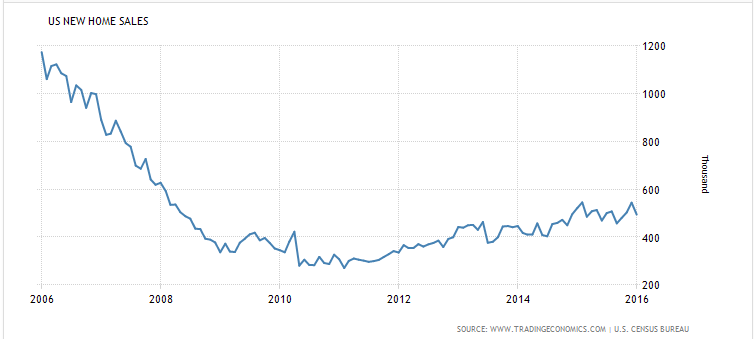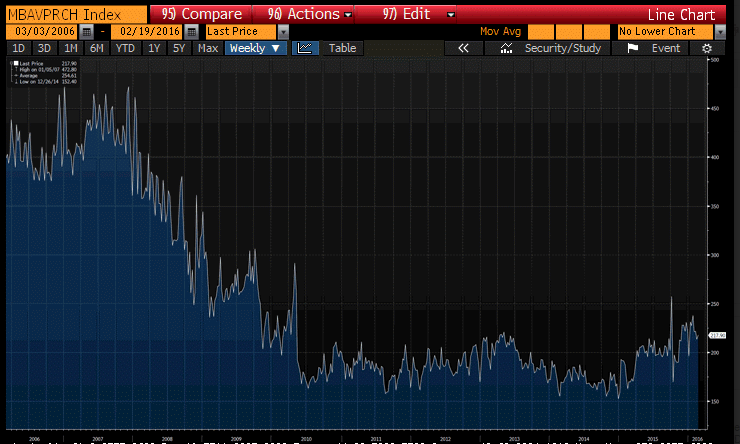Dear Senator Sanders,
Thank you for your attention to this matter!
My comments appear below:
By Senator Bernie Sanders
November 2 (Huffington Post) — As a result of the greed, recklessness, and illegal behavior on Wall Street, the American people have experienced the worst economic crisis since the Great Depression.
Not to mention the institutional structure that rewarded said behavior, and, more important, the failure of government to respond in a timely manner with policy to ensure the financial crisis didn’t spill over to the real economy.
Millions of Americans, through no fault of their own, have lost their jobs, homes, life savings, and ability to send their kids to college. Small businesses have been unable to get the credit they need to expand their businesses, and credit is still extremely tight. Wages as a share of national income are now at the lowest level since the Great Depression, and the number of Americans living in poverty is at an all-time high.
Yes, it’s all a sad disgrace.
Meanwhile, when small-business owners were being turned down for loans at private banks and millions of Americans were being kicked out of their homes, the Federal Reserve provided the largest taxpayer-financed bailout in the history of the world to Wall Street and too-big-to-fail institutions, with virtually no strings attached.
Only partially true. For the most part the institutions did fail, as shareholder equity was largely lost. Failure means investors lose, and the assets of the failed institution sold or otherwise transferred to others.
But yes, some shareholders and bonds holders (and executives) who should have lost were protected.
Over two years ago, I asked Ben Bernanke, the chairman of the Federal Reserve, a few simple questions that I thought the American people had a right to know: Who got money through the Fed bailout? How much did they receive? What were the terms of this assistance?
Incredibly, the chairman of the Fed refused to answer these fundamental questions about how trillions of taxpayer dollars were being spent.
The American people are finally getting answers to these questions thanks to an amendment I included in the Dodd-Frank financial reform bill which required the Government Accountability Office (GAO) to audit and investigate conflicts of interest at the Fed. Those answers raise grave questions about the Federal Reserve and how it operates — and whose interests it serves.
As a result of these GAO reports, we learned that the Federal Reserve provided a jaw-dropping $16 trillion in total financial assistance to every major financial institution in the country as well as a number of corporations, wealthy individuals and central banks throughout the world.
Yes, however, while I haven’t seen the detail, that figure likely includes liquidity provision to FDIC insured banks which is an entirely separate matter and not rightly a ‘bailout’.
The US banking system (rightly) works to serve public purpose by insuring deposits and bank liquidity in general. And history continues to ‘prove’ banking in general can work no other way.
And once government has secured the banking system’s ability to fund itself, regulation and supervision is then applied to ensure banks are solvent as defined by the regulations put in place by Congress, and that all of their activities are in compliance with Congressional direction as well.
The regulators are further responsible to appropriately discipline banks that fail to comply with Congressional standards.
Therefore, the issue here is not with the liquidity provision by the Fed, but with the regulators and supervisors who oversee what the banks do with their insured, tax payer supported funding.
In other words, the liability side of banking is not the place for market discipline. Discipline comes from regulation and supervision of bank assets, capital, and management.
The GAO also revealed that many of the people who serve as directors of the 12 Federal Reserve Banks come from the exact same financial institutions that the Fed is in charge of regulating. Further, the GAO found that at least 18 current and former Fed board members were affiliated with banks and companies that received emergency loans from the Federal Reserve during the financial crisis. In other words, the people “regulating” the banks were the exact same people who were being “regulated.” Talk about the fox guarding the hen house!
Yes, this is a serious matter. On the one hand you want directors with direct banking experience, while on the other you strive to avoid conflicts of interest.
The emergency response from the Fed appears to have created two systems of government in America: one for Wall Street, and another for everyone else. While the rich and powerful were “too big to fail” and were given an endless supply of cheap credit, ordinary Americans, by the tens of millions, were allowed to fail.
The Fed necessarily sets the cost of funds for the economy through its designated agents, the nations Fed member banks. It was the Fed’s belief that, in general, a lower cost of funds for the banking system, presumably to be passed through to the economy, was in the best interest of ‘ordinary Americans.’ And note that the lower cost of funds from the Fed does not necessarily help bank earnings and profits, as it reduces the interest banks earn on their capital and on excess funds banks have that consumers keep in their checking accounts.
However, there was more that Congress could have done to keep homeowners from failing, beginning with making an appropriate fiscal adjustment in 2008 as the financial crisis intensified, and in passing regulations regarding foreclosure practices.
Additionally, it should also be recognized that the Fed is, functionally, an agent of Congress, subject to immediate Congressional command. That is, the Congress has the power to direct the Fed in real time and is thereby also responsible for failures of Fed policy.
They lost their homes. They lost their jobs. They lost their life savings. And, they lost their hope for the future. This is not what American democracy is supposed to look like. It is time for change at the Fed — real change.
I blame this almost entirely on the failure of Congress to make the immediate and appropriate fiscal adjustments in 2008 that would have sustained employment and output even as the financial crisis took its toll on the shareholder equity of the financial sector.
Congress also failed to act with regard to issues surrounding the foreclosure process that have worked against public purpose.
Among the GAO’s key findings is that the Fed lacks a comprehensive system to deal with conflicts of interest, despite the serious potential for abuse. In fact, according to the GAO, the Fed actually provided conflict of interest waivers to employees and private contractors so they could keep investments in the same financial institutions and corporations that were given emergency loans.
The GAO has detailed instance after instance of top executives of corporations and financial institutions using their influence as Federal Reserve directors to financially benefit their firms, and, in at least one instance, themselves.
For example, the CEO of JP Morgan Chase served on the New York Fed’s board of directors at the same time that his bank received more than $390 billion in financial assistance from the Fed. Moreover, JP Morgan Chase served as one of the clearing banks for the Fed’s emergency lending programs.
This demands thorough investigation, and in any case the conflict of interest should have been publicly revealed at the time.
Getting this type of disclosure was not easy. Wall Street and the Federal Reserve fought it every step of the way. But, as difficult as it was to lift the veil of secrecy at the Fed, it will be even harder to reform the Fed so that it serves the needs of all Americans, and not just Wall Street. But, that is exactly what we have to do.
Yes, I have always supported full transparency.
To get this process started, I have asked some of the leading economists in this country to serve on an advisory committee to provide Congress with legislative options to reform the Federal Reserve.
Here are some of the questions that I have asked this advisory committee to explore:
1. How can we structurally reform the Fed to make our nation’s central bank a more democratic institution responsive to the needs of ordinary Americans, end conflicts of interest, and increase transparency? What are the best practices that central banks in other countries have developed that we can learn from? Compared with central banks in Europe, Canada, and Australia, the GAO found that the Federal Reserve does not do a good job in disclosing potential conflicts of interest and other essential elements of transparency.
Yes, full transparency in ‘real time’ would serve public purpose.
2. At a time when 16.5 percent of our people are unemployed or under-employed, how can we strengthen the Federal Reserve’s full-employment mandate and ensure that the Fed conducts monetary policy to achieve maximum employment? When Wall Street was on the verge of collapse, the Federal Reserve acted with a fierce sense of urgency to save the financial system. We need the Fed to act with the same boldness to combat the unemployment crisis.
Unfortunately employment and output is not a function of what’s called ‘monetary policy’ so what is needed from the Fed is full support of an active fiscal policy focused on employment and price stability.
3. The Federal Reserve has a responsibility to ensure the safety and soundness of financial institutions and to contain systemic risks in financial markets. Given that the top six financial institutions in the country now have assets equivalent to 65 percent of our GDP, more than $9 trillion, is there any reason why this extraordinary concentration of ownership should not be broken up? Should a bank that is “too big to fail” be allowed to exist?
Larger size should be permitted only to the extent that it results in lower fees for the consumer. The regulators can require institutions that wish to grow be allowed to do so only in return for lower banking fees.
4. The Federal Reserve has the responsibility to protect the credit rights of consumers. At a time when credit card issuers are charging millions of Americans interest rates between 25 percent or more, should policy options be established to ensure that the Federal Reserve and the Consumer Financial Protection Bureau protect consumers against predatory lending, usury, and exorbitant fees in the financial services industry?
Banks are public/private partnerships chartered by government for the further purpose of supporting a financial infrastructure that serves public purpose.
The banks are government agents and should be addressed accordingly, always keeping in mind the mission is to support public purpose.
In this case, because banks are government agents, the question is that of public purpose served by credit cards and related fees, and not the general ‘right’ of shareholders to make profits.
Once public purpose has been established, the effective use of private capital to price risk in the context of a profit motive should then be addressed.
5. At a time when the dream of homeownership has turned into the nightmare of foreclosure for too many Americans, what role should the Federal Reserve be playing in providing relief to homeowners who are underwater on their mortgages, combating the foreclosure crisis, and making housing more affordable?
Again, it begins with a discussion of public purpose, where Congress must decide what, with regard to housing, best serves public purpose. The will of Congress can then be expressed by the institutional structure of its Federal banking system.
Options available, for example, include the option of ordering that appraisals and income statements not be factors in refinancing loans originated by Federal institutions including banks and the Federal housing agencies. At the time of origination the lenders calculated their returns based on mortgages being refinanced as rates came down, assuming all borrowers would be eligible for refinancing. The financial crisis and subsequent failure of policy to sustain employment and output has given lenders an unexpected ‘bonus’ through a ‘technicality’ that allows them to refuse requests for refinancing at lower rates due to lower appraisals and lower incomes.
6. At a time when the United States has the most inequitable distribution of wealth and income of any major country, and the greatest gap between the very rich and everyone else since 1928, what policies can be established at the Federal Reserve which reduces income and wealth inequality in the U.S?
The root causes begin with Federal policy that has resulted in an unprecedented transfer of wealth to the financial sector at the expense of the real sectors. This can easily and immediately be reversed, which would serve to substantially reverse the trend income distribution.
Sincerely,
Warren Mosler






